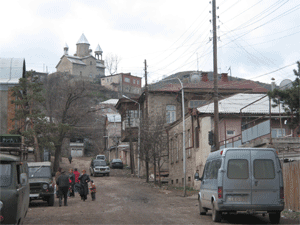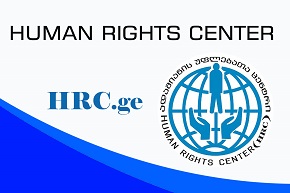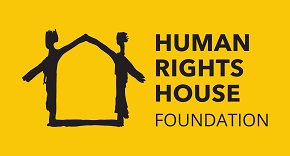 “The majority of locals are ill with cancer. A person will be healthy but suddenly find out that he or she has cancer. Too many people are sent from our region to the oncology clinic. The population is being slowly poisoned but no one thinks of the uranium." Dialogues like this can often be overheard on the bus in the town of Abastumani-Akhalcikhe. Village residents in the mountainous Adigeni municipality are beset by a number of cardiovascular diseases and cancer and are deeply concerned about the origins of their health problems. Residents believe that the dramatic increase in illnesses is caused by uranium leakages from uncontrolled Russian stores in the Persata Mountain, resulting in extremely high levels of radiation in the area.
“The majority of locals are ill with cancer. A person will be healthy but suddenly find out that he or she has cancer. Too many people are sent from our region to the oncology clinic. The population is being slowly poisoned but no one thinks of the uranium." Dialogues like this can often be overheard on the bus in the town of Abastumani-Akhalcikhe. Village residents in the mountainous Adigeni municipality are beset by a number of cardiovascular diseases and cancer and are deeply concerned about the origins of their health problems. Residents believe that the dramatic increase in illnesses is caused by uranium leakages from uncontrolled Russian stores in the Persata Mountain, resulting in extremely high levels of radiation in the area.
Eliko Endeladze became terribly depressed when she found out that her daughter was ill with throat cancer. The girl later died from the disease.
“She was always completely healthy," Endeladze says. "Until she was 12, she had never had health problems. One morning she woke up crying because she was unable to swallow saliva. She was my only child. I brought her to the doctor and was told that the cancer had already metastasized throughout her whole body. We could not save her. I believe that the cancer was caused by radiation in the area.”
The regional office of the Environmental Protection Department undertook research in Akhalcikhe four years ago when Nugzar Tateshvili was at its head. The Human Rights Center contacted Tateshvili to get more information on the situation in the area.
-Have military units been deployed on the Persati Mountain and are residents of the area reasonably worried? What research exists in the Regional Department of Environmental Protection and Natural Resources about the situation in Samckhe-Javakheti?
The local government of the town Akhalcikhe applied to the Georgian Ministry of Environmental Protection and Natural Resources and asked that they check the ecological situation in Samckhe-Javakheti. The survey took place approximately 4 years ago.
-On what basis were you told to check the region? Did you get any information from the locals about uranium existing in the Persati Mountain?
Gossip would not have helped us in problem solving and we needed concrete information. We required verification and thus an examination of the situation was requested.
-What were the results of this examination?
The group arrived but they neither met us and nor left any material.
Was it not under your request that the commission was called out from Tbilisi? You were not informed of the results? Why did not you demand them?
The local government is to blame here! Then the governor has changed and I was dismissed as well. The material might now be with the Department or the regional office of the Rescue Corps. I was not interested in this matter.
After our discussion with Tateshvili, we were sent to the Regional Department of Environmental Protection and Natural Resources of the Samckhe-Javakhia Region.
“We are not aware of any such problems and are hearing about this for the first time. We shall note it and report this to the Ministry,” an official with the Regional Department of Environmental Protection and Natural Resources of Samckhe-Javakhia said. No one in the Department knew anything about an ecological examination of the region. “We cannot say if such an examination was made in the region,” the official concluded.
The Human Rights Center was also unable to find information on the web site of the Georgian Ministry of Environmental Protection and Natural Resources concerning the examination.
Under the “Central Staff” section on the website of the Nuclear and Radiation Security Department, the following information can be found: “The competence of the Nuclear and Radiation Security Department is to provide for the implementation of state policy in the sphere of nuclear and radiation security.”
The History of the Military Unit
Everyone contacted admits that a secret Russian military unit was deployed on the Persata Mountain and that after its disbandment, cars, iron and other things were abandoned carelessly and eventually taken by the surrounding population.
“On the Persati Mountain, there were hidden places where airplanes were able to enter and remain undetected," says Petre Khitarishvili, a resident of the village of Vali. "Who would tell us that there was uranium? If it is true, then the Russian military's equipment there would also be radioactive. The fact is that in our region people are suffering from specific diseases. One of my relatives works in the Tbilisi Oncology Clinic and told me that the people from Samckhe-Javakheti are mainly ill with cancer.”
“When the Russians left their military base, people found out from shepherds," says Jemal Svanidze, another local resident. "Then, the locals began collecting the abandoned “armatures,” “motors” etc. I know families whose summer houses are made from the iron salvaged from the Persata Mountain. I know that uranium was in the Persata Mountain base, but I cannot say if there is any still there. In my opinion, the Russians would not leave uranium. The things people took from the site were dangerous for their health and I think that is why people became ill.”
The Human Rights Center contacted Cardiologist Tamaz Matoshvili regarding the situation in Samckhe-Javakheti.
“Cardiovascular diseases have increased in recent years in the Samckhe-Javakheti," Matoshvili says. "There is no doubt that one cause is radiation."
-What are the statistics of cardiovascular diseases in recent years?
The cardiovascular diseases have increased not only among older residents but among young people as well. If myocardial heart attacks were typical for people over 50, they are now common among people between the ages of 35-40.
-What is the percentage index of advanced diseases?
80 % of therapy diseases are cardiovascular. During dispensary consultations, approximately 100 patents visit me in a month. And at the end of the year, the number of people can grow to 1000. The average patient is under 50.
-In your opinion, what is the cause of this?
It is directly connected with the living conditions in the region, although I would say that the main reason is radiation.
-Could you see a connection between with the radiation present and Russian military activity?
Russian military forces left Georgia, but cesium ampoules remained and poisoned Georgian soldiers. Although I do not have exact evidence of how much residual radiation exists in Akhalcikhe. Aside from cardiovascular diseases, oncological illnesses have also increased as a result of this radiation.
-On what basis do you form such conclusions?
While working in the Adigeni region at the beginning of the 90's, I doubted that radiation directly impacted the health of the local population. In some villages, its influence was obvious. The same number of people live in the villages of Varkha and Ude. They are several kilometers apart. When we were assessing the death rate, we found that the death rate in Ude was seven times higher than it was in Varkha. We subsequently discovered that the Soviet army had been monitoring the Turkish border units by locator and that the locator overseeing Ude had been emitting huge amounts of radiation.
Have you sought assistance?
I spoke with the specialists of the so-called 'chemical division,' but it was impossible to hold the appropriate type of examination with their equipment. They had only stationary instruments and it proved impossible to move them. Examinations of that type are also very costly.
Gulo Kokhodze, Adigeni-Akhalcikhe



